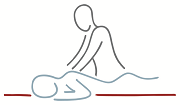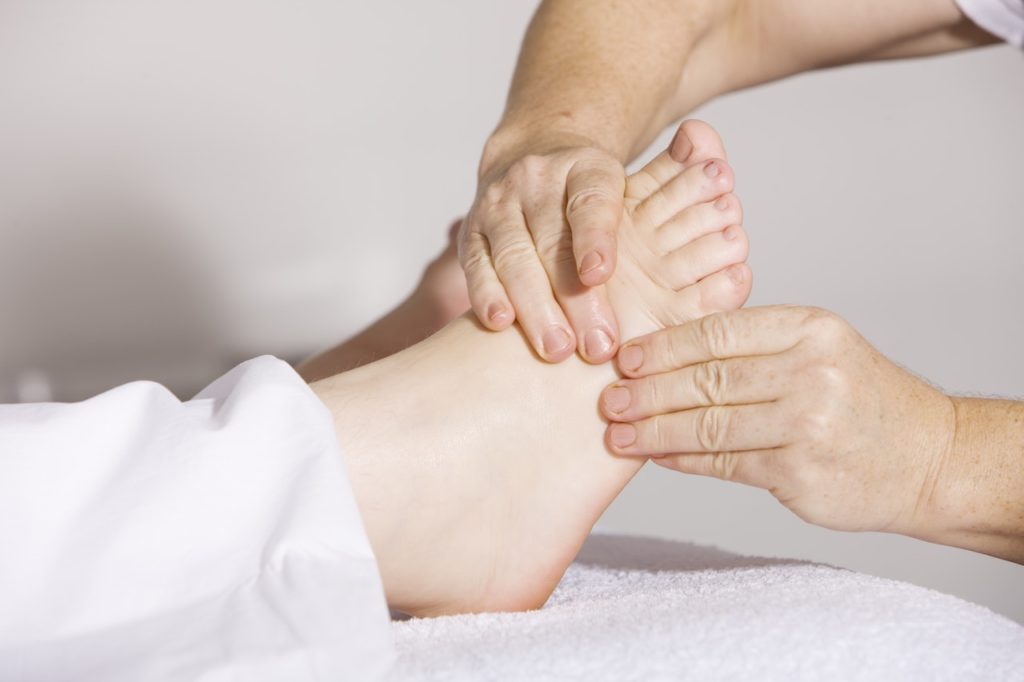What is Reflexology?
Reflexology is a holistic theory and therapy that treats the feet in order to harmonise the flow of energy in the whole body, and so balancing mind, body and spirit. A reflex is when stimulation of one point on the body brings about a response in another point or area. Reflexology uses thumb, finger and knuckle pressure to stimulate points on the feet, helping the body to relax and heal itself.
The History of Reflexology
Many cultures have treated the feet to promote health and wellbeing. The tomb of an Egyptian physician Ankhmahor dating from around 2330BC has a series of images depicting foot massages or treatments. American Indians massaged the feet for physical, mental and spiritual balance. And of course the Chinese have been using acupressure for millennia. You can read more about acupressure in my blog about it.
The first records of pressure being used therapeutically in Europe are from the middle ages. Significant progress was made in the nineteenth century with the mapping of dermatomes. A dermatome is an area of skin supplied by a single spinal nerve and which relays sensory information (e.g. pain, heat, cold) back to the brain. You can find out more about dermatomes here.
Early in the twentieth century, an American ear, nose and throat physician, Dr William Fitzgerald, discovered that by applying pressure to one part of the body, another part would be anaesthetised. This led him to map the body into ten longitudinal zones, which forms the basis of reflexology today. Every part of the body in a particular zone is linked, so that if energy is blocked in one area, it will affect the rest of that zone. It is a very similar concept to the meridian theory of acupuncture and shiatsu.
It was Eunice Ingham who devised reflexology (also known as zone therapy) from Fitzgerald’s foundational work on zone theory. She found that treating the feet was the best way to access the rest of the body as each of the ten zones ends in the feet (one per toe) and the feet are more sensitive to acupressure than the hands. Ingham also devised three transverse zones on the base of the feet to help map the body with the base of the toes representing the shoulder line, the narrowest part of the foot representing the waistline and the heel representing the pelvic line.
Reflexology has become one of the most popular complementary therapies today. And like other holistic therapies, it works on the person as a whole and doesn’t just focus on symptoms.
Potential Benefits of Reflexology
Reflexology does not aim to diagnose disease or cure it, but to promote the free flow of the body’s own energy for health and wellbeing. Chronic physical or mental stress, which stimulate the sympathetic nervous system, can lead to ill health and injury because the body doesn’t have enough down time to heal itself. Reflexology stimulates the parasympathetic nervous system, which counteracts the sympathetic nervous system by calming everything down and enabling the body to go into rest and repair mode.
Some of the potential benefits of reflexology are:·
- Inducing deep relaxation and so reducing stress·
- Improving circulation·
- Promoting homeostasis and detoxification·
- Boosting energy·
- Stimulating the immune system.
When I have had reflexology treatments, I have found it profoundly relaxing and revitalising. For up to two days after, my legs and feet feel noticeably freer, as though they have had the most wonderful massage!
If you would like to book a reflexology treatment in Yattendon, Pangbourne or Bourne End, or to find out more, do get in touch by phone on 07528 708650 or by email at wendy@rookeholistic.co.uk or through my website www.rookeholistic.co.uk.

